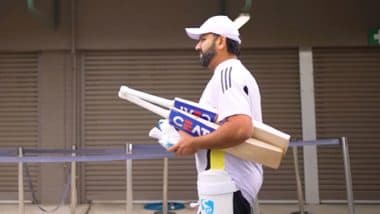
Despite being worlds apart during the Second World War, Kamloops locals were quick to support the war effort by rallying behind the city's seafaring namesake, the HMCS Kamloops. According to Bill Woodburn, chair of the Halifax-based Canadian Naval Memorial Trust, the vessel was among Canada’s 123 Flower-class corvettes named after local communities. “They kind of adopted the ship, it was a representative of their town or their city, and they wanted to make sure that they were supporting the crews that were out there,” Woodburn said.
“Particularly when you come from out west or in the prairies. I mean, there was a huge number of sailors that joined from those areas to fight during the war.” According to a 1987 article by the Kamloops Sentinel, a civilian auxiliary formed in Kamloops to sponsor the ship and the RCAF’s Moose Squadron.

The auxiliary would support servicemen with gifts and donations. Among the items sent to the HMCS Kamloops’ crew were Christmas gifts, a washing machine, two electric irons and magazine subscriptions. In a letter to the editor published in the Senior Connector in 1996, Ken Garrett of Inverary, Ont.
, who served on the HMCS Kamloops, thanked the “wonderful people of Kamloops.” “It has been my intention for over 50 years to thank the city of Kamloops for the Christmas gifts of Christmas 1942,” Garrett wrote. “As I recall, it was 26 turkeys, as well as lots go balaclavas, turtleneck sweaters and enough knitted mitts for the entire crew, as well as many packages of cigarettes and chocolate.
” A campaign run by the Kamloops Sentinel newspaper sought to send the city’s namesake vessel a “tangible token” of their connection. The campaign would reach city council in March where approval was given to gift a silver bell. An inscription on the bell reads “Presented to the Officers and Ratings of Citizens of Kamloops, British Columbia, April 1941.
” The crew of the HMCS would eventually return the bell to the city after the war, leaving their own inscription that reads “Returned to the citizens of Kamloops by the officers and men of HMCS Kamloops expressing their gratitude for all the kindness from the city May 24, 1945.” The small silver bell was displayed in the Sentinel’s window after it was returned. A second larger brass bell from the vessel was later discovered by former Kamloops resident Gary Lowe at a flea market in Toronto in the 1980s.
The two bells would reunited at the museum after it was donated by Lowe. According to an unknown newspaper clipping from the Kamloops Museum and Archives, $503.80 in surplus canteen-funds from the ship were sent to Royal Inland Hospital after the ship was decommissioned, and were used to furnish a new ward.
In his letter to the Senior Connector, Garrett said the 1943 war film Corvette K-225 was filmed using the HMCS Kamloops while he was onboard. While the sister-ship HMCS Kitchener was used in the movie, the HMCS Kamloops was assigned the camera. “The shots we made on the Kamloops were where you see the Kitchener breaking through the waves in a gale.
The shots only lasted a few minutes but it took three days to get back into harbour,” Garrett said. During the film’s shooting, Garrett recounted that the vessel’s helmsmen asked him to hold the wheel while he visited the canteen. Alone at the helm, Garrett said he got a call from the captain.
“It is important to know the camera crew is on the boat deck taking pictures of the sub P512 which is surfacing,” the captain told Garrett. “If the ship goes one degree of course we will have a collision with the sub and lives will be lost, so be careful.” When the helmsman returned, Garrett said “Thanks a lot.
” Corvette K-225 was later nominated for an Academy Award for cinematography. According to the CNMT, the HMCS Kamloops was commissioned in Victoria in 1941. It arrived at Halifax in June, where it was assigned as a local escort until the end of the year.
In January it commenced a year’s duty as an anti-submarine training ship — Corvette K-225 was likely filmed around this time — before it was retrofitted, conducted operational readiness training and joined the Western Local Escort Force in March of 1943 where it escorted merchant ships across the Atlantic. The HMCS Kamloops received battle honours “Atlantic 1941 and 1943 - 1945, and Gulf of St. Lawrence 1942.
" In one harrowing occasion, the vessel was among a 65-ship convoy when they came under fire from 21 German U-Boats. Six merchant ships and three escorts were lost. Based on a British design, the Flower-class corvette was 205 feet in length, 33 feet across and had a maximum speed of 16 knots.
It was armed with one four inch gun, two 20 mm guns and depth charges, according to the Sentinel. “Churchill would call them the cheap and nasties, they were quite versatile at sea,” Woodburn said. “It was roughly designed for about 50 people on board, and they were stacked up to 85 as a standard crew.
” The vessel would eventually be paid off after the war, in June 1945, and sold to a tug operator in 1946 in Amherstburg, Ont. John O’fee, who wrote about the ship in a column for the Kamloops Daily News in 2009, said the HMCS Kamloops is only one story of many. “We've certainly got our share of veterans who both served and sadly died in wars defending our nation, and it's a time for us to reflect upon that sacrifice,” O’Fee said to Castanet Kamloops.
“Not just those who died, quite frankly, but everyone who serves the country. There should be a day we set aside for that.”.










